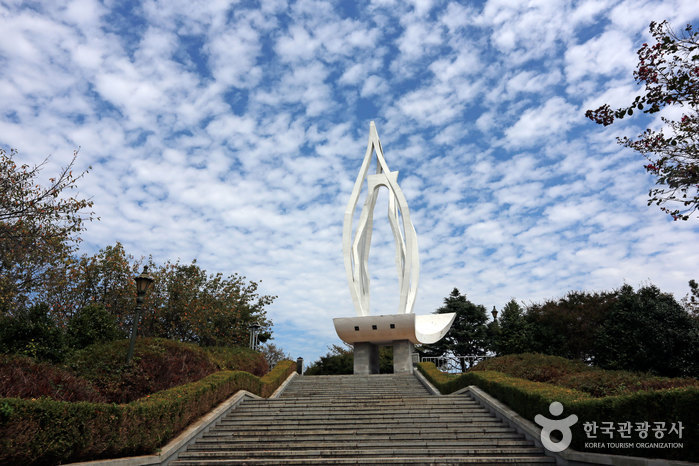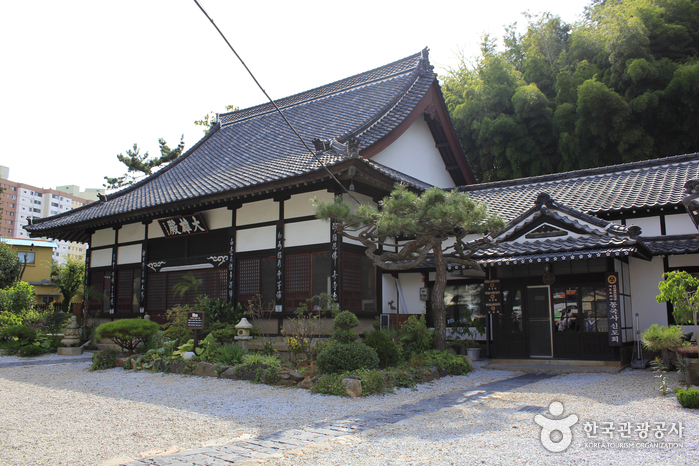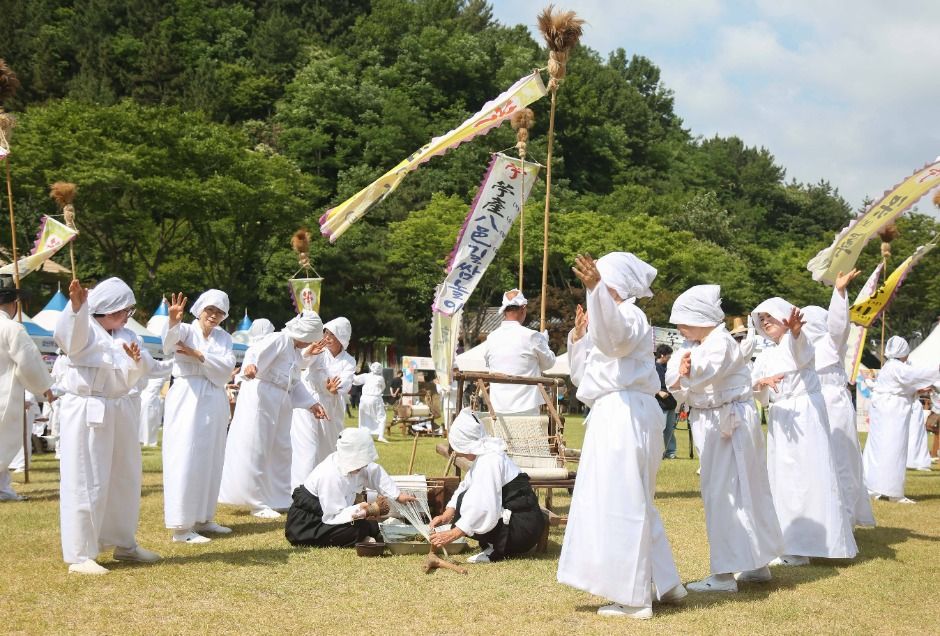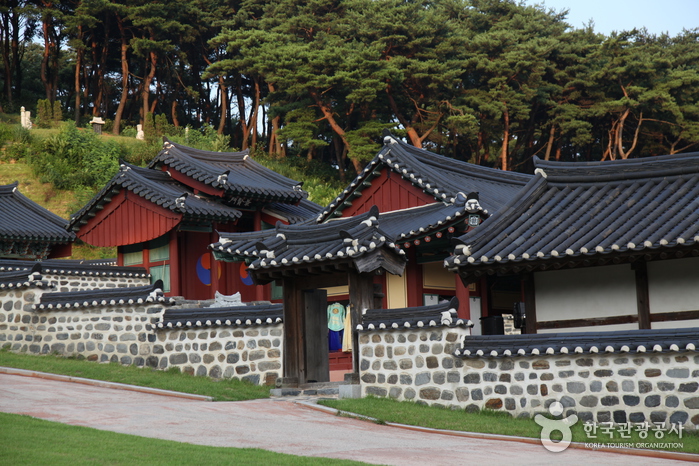Bokseongnu (복성루)
6.4Km 2024-04-07
382 Wolmyeong-ro, Gunsan-si, Jeonbuk-do
+82-63-445-8412
Bokseongnu is one of the top three jjamppong (spicy seafood noodle soup) restaurants in the Gunsan area. Its specialty lies in its flavorful jjamppong broth, made with fresh squid, mussels, cockles, and vegetables. Another popular menu item is the mul jjajang (black bean sauce noodles in broth), prepared by slicing various vegetables and seafood and adjusting the thickness with starch.
Dal [Korea Quality] / 달 [한국관광 품질인증]
6.4Km 2024-04-07
21-2 , Guyeong 3-gil, Gunsan-si, Jeonbuk-do
+82-10-9548-3383
The Dal (‘Moon’) Guesthouse, on Modern Culture Street in Gunsan, Jeollabuk-do, is a renovated old house and offers a variety of rooms, from dormitory rooms for single travelers to private rooms for couples, families and groups. The private rooms have bathrooms and TV. Sandwiches, fruit and coffee are provided free of charge in the morning at the 1st floor cafe, and there is a shared kitchen on the 2nd floor. The Japanese-style houses in Shinheung-dong, Dongguksa Temple, and Chowon Photo Studio are all within a 2-3 minute walk.
Japanese-style House in Sinheung-dong (Hirotsu House) (군산 신흥동 일본식가옥(히로쓰 가옥))
6.4Km 2024-04-07
17, Guyeong 1-gil, Gunsan-si, Jeonbuk-do
+82-63-454-3315
Japanese-style House in Sinheung-dong was designated as Registered Cultural Heritage in 2005. The area of Sinheung-dong, where the Hirotsu House is located, was a residential area for the wealthy class during the Japanese occupation period. The house is named after Hirotsu, the man who built the house.
Several Korean movies and dramas such as "The General’s Son (1990)," Fighter in the Wind (2004)," and "Tazza: The High Rollers (2006)" were filmed in this house. The house is a typical Japanese two-story timber house, keeping the original forms of its roof, outer walls, inside area and the Japanese-style garden which has significant meaning in regards to the architecture history.
Wolmyeong Park (월명공원)
6.5Km 2024-04-07
26-3, Wolmyeonggongwon 1-gil, Gunsan-si, Jeonbuk-do
+82-63-450-4000
Wolmyeong Park is a popular tourist destination in Gunsan and
connects five mountains in the vicinity. The park has 12 kilometers of walking trails, as well as an observatory, sculpture park, and various monuments. From Susi Tower, which resembles a flame or wind-blown sail, people can see all of downtown Gunsan, the sea to the south of Gunsan, the mouth of the Geumgang River, and the large Janghang smelting factory.
The park has well-arranged gardens and 30-year old rattan and cherry trees. A cherry blossom photo contest is held every April, when the park is covered in cherry blossoms.
Gunsan Dongguksa Temple (동국사(군산))
6.6Km 2024-04-07
16, Dongguksa-gil, Gunsan-si, Jeonbuk-do
+82-63-462-5366
Dongguksa Temple was built by Japanese monk Seoneungbulgwan in 1909. The temple was run by Japanese monks for 36 years during the Japanese occupation, reverting to Korean jurisdiction when Korea was liberated in 1945. The historical temple is the only surviving Japanese-style temple in the nation.
The temple is characterized by its two main buildings, Daeungjeon Hall and Yosachae, which are connected by a corridor, and the temple’s relative lack of decoration, which stands as a sharp contrast to the brilliantly-colored Korean temples. Dongguksa Temple was officially designated as Cultural Asset in July 2003 and is now a branch temple of Seonunsa Temple in Gochang, the 24th district of the Korean Buddhist Jogye Order.
Seocheon Dalgogae Mosi Village (서천 달고개모시마을)
7.1Km 2021-03-10
5, Hwahan-ro 504beon-gil, Seocheon-gun, Chungcheongnam-do
+82-41-950-6380
In Seocheon Dalgogae Mosi Village, the long-standing tradition of Hansan mosi (ramie fabric) is passed down and preserved in the hands of the village women. Hansan mosi is also called fine ramie because of the time-consuming and labor-intensive process involved. The village offers a variety of mosi-themed experience programs for visitors with the help of experienced village artisans. Programs include ramie plant harvesting and ramie fabric weaving. Visitors can also try some highly nutritious ramie rice cakes and tea.
Hansan Ramie Fabric Cultural Festival (한산모시문화제)
7.3Km 2025-07-11
1089 Chungjeol-ro, Seocheon-gun, Chungcheongnam-do
+82-41-957-9045
Ramie fabric is a traditional Korean cloth with good ventilation, making it the fabric of choice for summer clothing. Hansan’s ramie is used to make high-end clothing due to its delicate and elegant texture. It is also an eco-friendly fiber that is extracted from ramie grass and weaved into a loom. Hansan’s ramie weaving was registered as a UNESCO Intangible Cultural Heritage in 2011 in recognition of its unique production technology as well as its ability to strengthen community solidarity in the process. At the Hansan Ramie Fabric Cultural Festival, visitors can participate in the “Ramie School” program and learn the weaving process. Other attractions include Gilssam Nori, a ramie-weaving work, and a fashion show featuring clothes made from Hansan ramie is a highlight not to be missed.
◎ Tip
During the festival, a free shuttle bus operates from the Hansan Mosi Hall parking lot to the festival venue.
Lotte Himart - Gunsan Lotte Mart Branch [Tax Refund Shop] (롯데하이마트 군산롯데마트점)
7.5Km 2024-04-16
185, Susong-ro, Gunsan-si, Jeollabuk-do
-
LG Best Shop - Susong Branch [Tax Refund Shop] (엘지베스트샵 수송점)
7.7Km 2024-06-27
200, Wolmyeong-ro, Gunsan-si, Jeollabuk-do
-
Munheonseowon Confucian Academy (문헌서원)
8.2Km 2025-10-23
66 Seowon-ro 172beon-gil, Gisan-myeon, Seocheon-gun, Chungcheongnam-do
+82-41-953-5895
Munheonseowon Confucian Academy was established to pay tribute to the memory of Lee Gok (1298-1351) and Lee Saek (1328-1396) who were well-respected for their writings and character. The school was originally built in 1594, but was burnt down during the Imjin War (1592-1598). It was rebuilt in 1610 and became a legislated private institute in 1611.
The academy consists of an educational area and a shrine. Mortuary tablets of five Confucian scholars including Lee Jong-hak, Lee Ja, Lee Gae as well as Lee Gok and Lee Saek were enshrined at the school.

![Dal [Korea Quality] / 달 [한국관광 품질인증]](http://tong.visitkorea.or.kr/cms/resource/35/2652935_image2_1.jpg)



![Lotte Himart - Gunsan Lotte Mart Branch [Tax Refund Shop] (롯데하이마트 군산롯데마트점)](http://tong.visitkorea.or.kr/cms/resource/14/2890214_image2_1.jpg)
![LG Best Shop - Susong Branch [Tax Refund Shop] (엘지베스트샵 수송점)](http://tong.visitkorea.or.kr/cms/resource/24/3314724_image2_1.jpg)

 English
English
 한국어
한국어 日本語
日本語 中文(简体)
中文(简体) Deutsch
Deutsch Français
Français Español
Español Русский
Русский